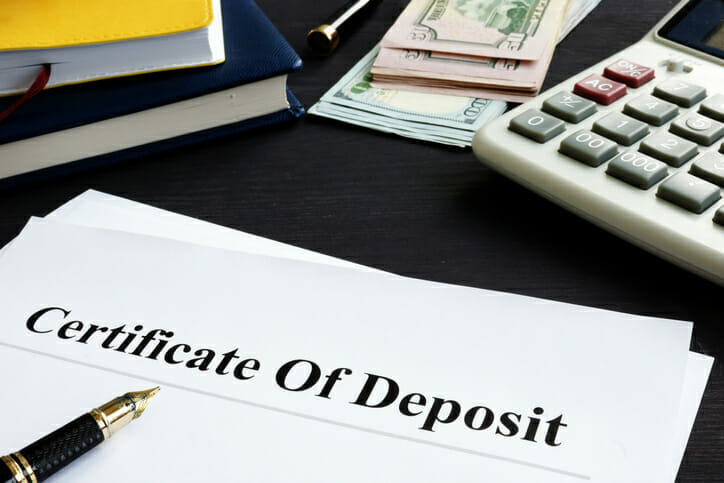Learning how to invest $500 can open the door to a variety of accessible investment options, even if you’re new to building wealth. Small amounts like $500 can be invested in stocks, bonds, ETFs, mutual funds, or kept in high-yield savings accounts and certificates of deposit. The flexibility of today’s financial platforms lets you start with limited funds, explore different types of securities and choose account types that suit your needs. By understanding your available choices, you can begin growing your money with just $500.
A financial advisor can answer your questions, while also helping you build a financial plan for the future.
Types of Securities to Invest In
There are two basic considerations in deciding how to invest $500 or any amount of money for that matter. One is which types of securities you intend to invest in. This could include stocks, bonds or alternative investments, among others.
Individual Stocks
To get started, you don’t have to spend $500 on one stock. Popular companies, notably those among FAANG stocks (Facebook, Amazon, Apple, Netflix and Google) can be bought for hundreds to thousands of dollars per share. But then your $500 would run out if you’re lucky enough to buy one.
Many smaller companies offer shares for as little as $1 or $5 each. Buying several different stocks allows you to diversify, even with a small amount of money.
Bonds
Bonds can be a great alternative if you are not a fan of participating in a volatile stock market. Bonds are a fixed-income security where you lend money to the government or a corporation, with you getting money back from them over a period of time. And while bonds don’t yield higher returns like a stock potentially could, bonds offer less risk in losing money than a stock could, too. Bonds add diversification to your portfolio, especially when combined with stocks.
Mutual Funds
Getting started with a mutual fund with $500 in your pocket is quite simple. There are a lot of mutual funds that allow investors to get started with no minimum requirement. That means you can begin investing with as little as $1. Active managers often run mutual funds, choosing which stocks, bonds, and other investments to buy and sell. Like ETFs, mutual funds provide built-in diversification that helps reduce risk.
Exchange-Traded Funds (ETFs)
Many online brokerages offer exchange-traded funds (ETFs) to clients. These are similar to mutual funds, but they can be bought or sold on a stock exchange. These ETFs are funds that contain a lot of different kinds of investments. You might choose an ETF that invests in stocks, commodities, bonds or a combination of all three. Because you’re investing in a lot of assets, your risk is lower than if you were investing in one asset.
High-Yield Savings Account
You could invest in a high-yield savings account. In early 2025, high-yield savings accounts commonly offer an annual percentage yield (APY) greater than 4%.
If you put money in every month, of course, you would make even more. The advantage of putting your money in a high-yield savings account is that you take the money out whenever you want, for an unexpected expense or emergency, without a penalty. That’s also the disadvantage. You won’t save much if you pull the money out of the account.
Certificate of Deposit (CD)

A certificate of deposit, or CD, is a low-risk way to make money, and banks and credit unions offer them. But the important thing to remember about CDs is that they have maturity dates. When you purchase a CD, the maturity date can range from 28 days to 10 years.
As long as you buy a CD from a reputable, FDIC-insured institution, your money is protected up to $250,000. The main risk comes if you withdraw your funds before the maturity date, which leads to a penalty. You can find some of the best CD rates here.
Where to Hold Your Money
After choosing which types of securities to invest in, consider what type of account or structure to use. Each account has its own advantages.
Taxable Brokerage Account
A taxable brokerage account gives you flexibility to buy stocks, bonds, ETFs or mutual funds without contribution limits or early withdrawal restrictions. Any gains or income are subject to taxes in the year they’re realized, but you can access your money at any time.
Workplace Retirement Account
Many employers offer workplace retirement plans, such as a 401(k), 403(b) or 457. You can usually start with a small contribution, invest in a variety of funds, and sometimes receive employer matching contributions. Most plans use pre-tax dollars, and withdrawals are taxed as ordinary income in retirement.
IRA or Roth IRA
You can open an individual retirement account (IRA) with $500 or less at many banks, credit unions, or online brokerages. IRAs let you invest in stocks, bonds, or mutual funds. Traditional IRAs may allow you to deduct contributions now and pay taxes later in retirement, while Roth IRAs skip the upfront tax break but allow tax-free withdrawals in retirement.
FDIC-Insurance Bank Account
For those who prefer maximum safety, an FDIC-insured savings account or certificate of deposit (CD) is another option. These accounts don’t offer growth potential like securities, but your principal is protected, and your funds are accessible with few restrictions.
529 Plan or Health Savings Account (HSA)
If you’re planning for education expenses, a 529 plan allows you to invest after-tax dollars and grow earnings tax-free when used for qualified education costs. A health savings account (HSA) lets you invest money for medical expenses with triple tax advantages: contributions are pre-tax, growth is tax-free, and withdrawals for qualified expenses are also tax-free.
Bottom Line

If you have $500 to invest, avoid rushing into a decision. If you might need the money soon, it’s better to keep it accessible. Investments grow best when given time, so if you’re unsure or need liquidity, consider a high-yield savings account. You can always withdraw the money later without a penalty.
Tips For Investing
- If you want to learn about investing, the services of a financial advisor can be most helpful. Finding a financial advisor doesn’t have to be hard. SmartAsset’s free tool matches you with vetted financial advisors who serve your area, and you can have a free introductory call with your advisor matches to decide which one you feel is right for you. If you’re ready to find an advisor who can help you achieve your financial goals, get started now.
- A robo-advisor is a unique alternative to a financial advisor, as they can automatically manage your investments based on your investor profile. Robo-advisors typically have lower fees and account minimums. And this makes them a good option for investors with less money to invest.
Photo credit: ©iStock.com/Jinda Noipho, ©iStock.com/Khaosai Wongnatthakan ,©iStock.com/designer491
